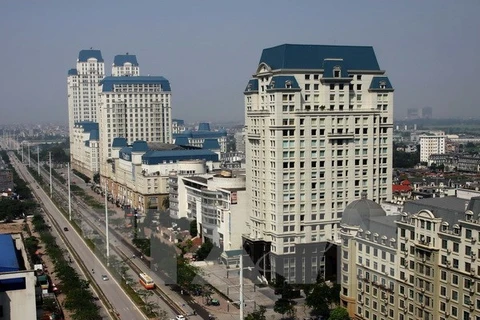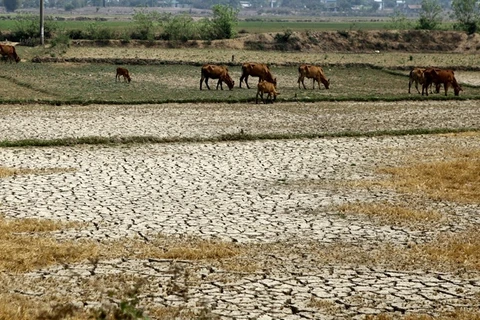Hanoi (VNA) – Urbanization in Vietnam has been growing beyond forecast due to a lack of control, many experts warned at a workshop that sought for the sustainability of the planning and resilience for the country’s urban areas in Hanoi on January 10.
They voiced their worries about the urban management, planning, and administration capacity as it has yet kept pace with the urbanization rate.
Urban areas are dealing with the growing population, traffic congestions, water resource pollutions, flooding, tidal flood, and energy shortage, they noted, suggesting the development of a database to control the development of housing projects and industrial zones and review and revise laws, mechanisms and policies to effectively manage the urbanization process.
The awareness and capacity of those working in planning and sustainable development should be improved, they said.
Dr. Tran Thi Lan Anh, deputy head of the Department for Urban Development of the Ministry of Construction, said the development of public transport systems in big cities in Vietnam have failed to meet the demand of their dwellers. Besides, lighting and daily wastewater treatment has not been paid enough attention.
According to Achim Fock, an expert from the World Bank, many urban development projects did not follow planning and lack social infrastructure. The use of urban land has not been effective as well.
Dr. Liu Thai Ker, Chairman of the Centre for Liveable Cities, shared that Singapore has made the best use of natural elements, like sunlight, wind and rainwater, while applying high technology and smart products to bring economic benefits and safety for its people.
According to the Ministry of Construction, as of 2016, Vietnam had 802 urban areas and 10,000 rural residential areas.
The country’s urbanization rate grew from 20 percent in 1998 to 36.6 percent in 2016 with urban land acreage increasing from 630 square kilometers to 41,700 square kilometers, equal to 12.6 percent of the country’s natural area.
The urban areas contributed 70 percent of the budget income and 50 percent of the GDP.-VNA
They voiced their worries about the urban management, planning, and administration capacity as it has yet kept pace with the urbanization rate.
Urban areas are dealing with the growing population, traffic congestions, water resource pollutions, flooding, tidal flood, and energy shortage, they noted, suggesting the development of a database to control the development of housing projects and industrial zones and review and revise laws, mechanisms and policies to effectively manage the urbanization process.
The awareness and capacity of those working in planning and sustainable development should be improved, they said.
Dr. Tran Thi Lan Anh, deputy head of the Department for Urban Development of the Ministry of Construction, said the development of public transport systems in big cities in Vietnam have failed to meet the demand of their dwellers. Besides, lighting and daily wastewater treatment has not been paid enough attention.
According to Achim Fock, an expert from the World Bank, many urban development projects did not follow planning and lack social infrastructure. The use of urban land has not been effective as well.
Dr. Liu Thai Ker, Chairman of the Centre for Liveable Cities, shared that Singapore has made the best use of natural elements, like sunlight, wind and rainwater, while applying high technology and smart products to bring economic benefits and safety for its people.
According to the Ministry of Construction, as of 2016, Vietnam had 802 urban areas and 10,000 rural residential areas.
The country’s urbanization rate grew from 20 percent in 1998 to 36.6 percent in 2016 with urban land acreage increasing from 630 square kilometers to 41,700 square kilometers, equal to 12.6 percent of the country’s natural area.
The urban areas contributed 70 percent of the budget income and 50 percent of the GDP.-VNA
VNA























